Its Alpine cheese season.
Welcome this magnificently melty cow’s milk cheese from Switzerland: Raclette!!Raclette is the cheese of legend, based on the story of a man from Valais by the name of Leon. One cold day, with food scarce in the open pastures, Leon heated up a piece of cheese on the open fire to ease his hunger and keep warm. He found the melted cheese had a transcendent flavor. It not only complemented other foods – it made a great, satisfying meal for his family. Popular since the Middle Ages, Raclette is still produced with milk from cows that are fed fresh grass in the summer and meadow hay in the winter.The word raclette stems from the French verb racler, or "to scrape.” This cheese is a staple in the Swiss & French Alpine culinary culture and has to follow strict regulations from the cows to the creamery to the finishing process (the affinage). Each raclette has to have an official quality mark AOP (Appellation d’Origine Protegée) which is reserved for traditional products with long-standing regional origins. Melt this cheese and serve it on top of anything from bread to cured meats, potatoes, pickles, or just about anything else. Enjoy raclette with a glass of Alpine wines, such as the Swiss Fendant, French Savoy, rieslings, or pinot gris. Not into wine? Try it with warm tea or other warm beverages. Sold in our deli for $23/lb.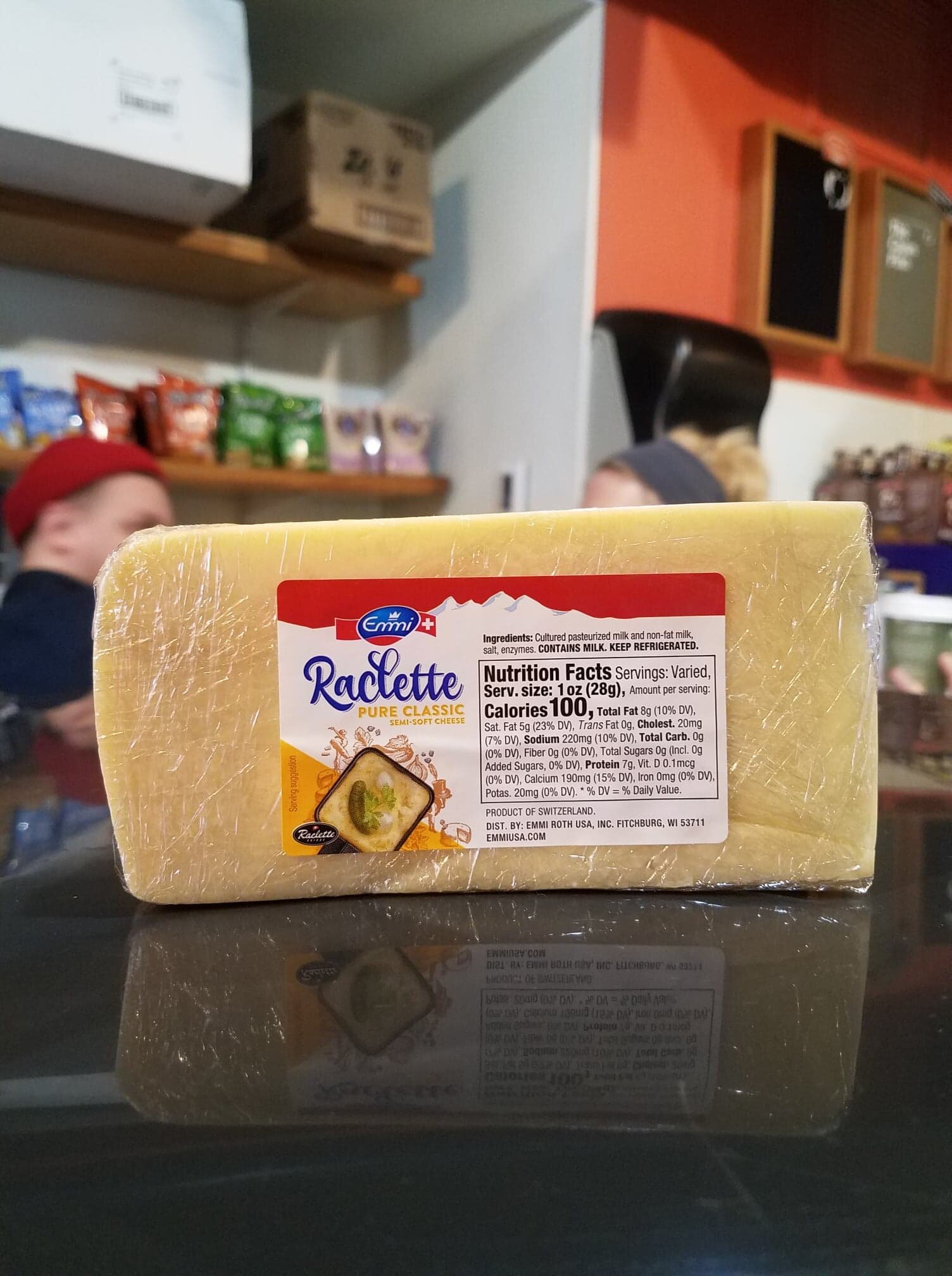



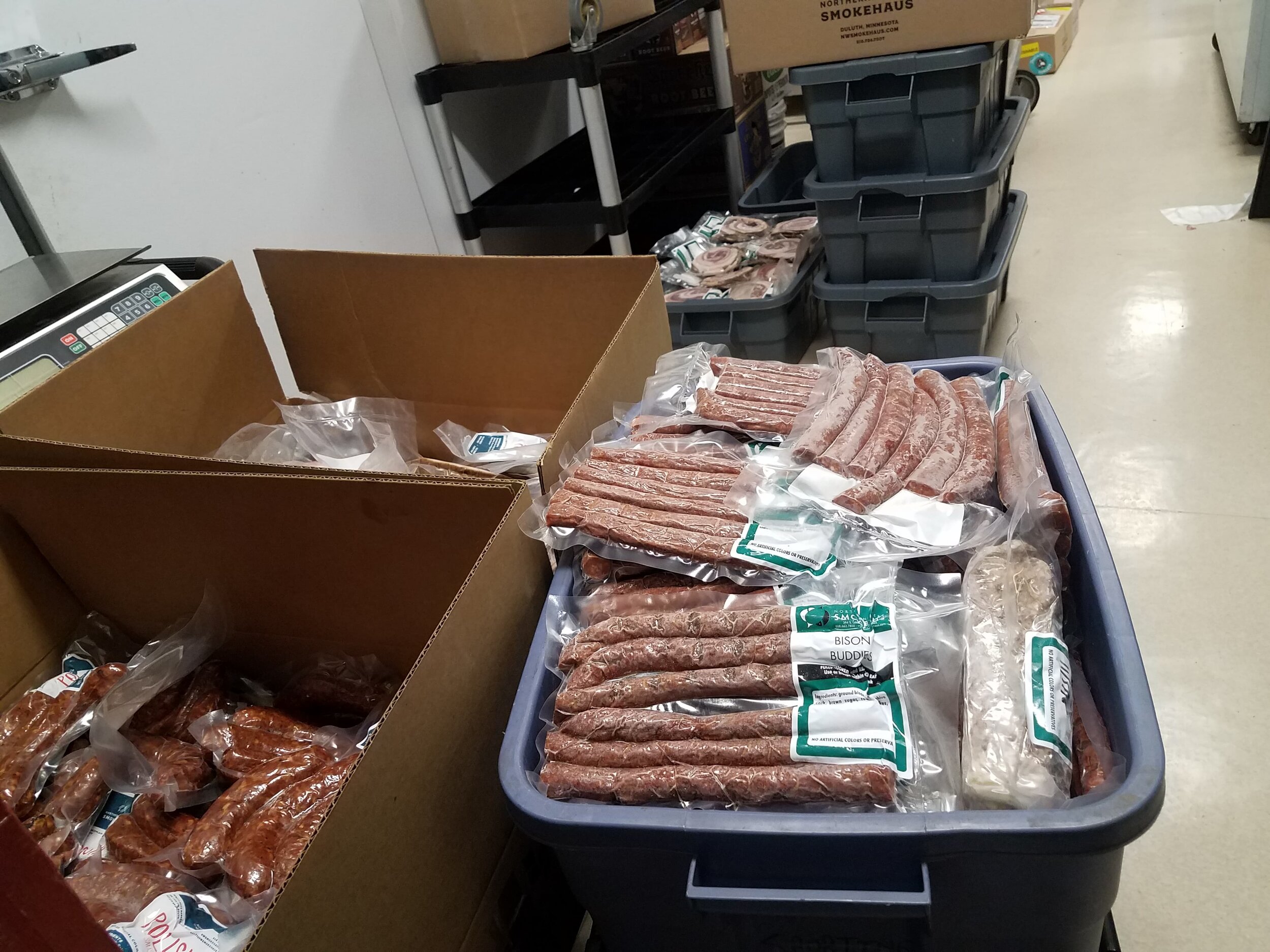 The surroundings toe the line of order and chaos. Zip-tied bundles of flattened boxes are piled high in canted and zigzagging stacks top a labyrinthine arrangement of shelves. The wall of product label sticker spools is functional, if disorganized.
The surroundings toe the line of order and chaos. Zip-tied bundles of flattened boxes are piled high in canted and zigzagging stacks top a labyrinthine arrangement of shelves. The wall of product label sticker spools is functional, if disorganized.  This week, twenty pallets of recycled denim box-liners were delivered to DeWitt-Seitz and our off-site storage area. 4ish- by 3ish- by 6ish-foot boxes of them are stacked in the office, and various corners of the floor. We have even requisitioned a room down a winding path of hallways that I had not travelled before I began researching this week’s blog to stack our boxes and liners, which is filled to the ceiling/skylight.
This week, twenty pallets of recycled denim box-liners were delivered to DeWitt-Seitz and our off-site storage area. 4ish- by 3ish- by 6ish-foot boxes of them are stacked in the office, and various corners of the floor. We have even requisitioned a room down a winding path of hallways that I had not travelled before I began researching this week’s blog to stack our boxes and liners, which is filled to the ceiling/skylight. 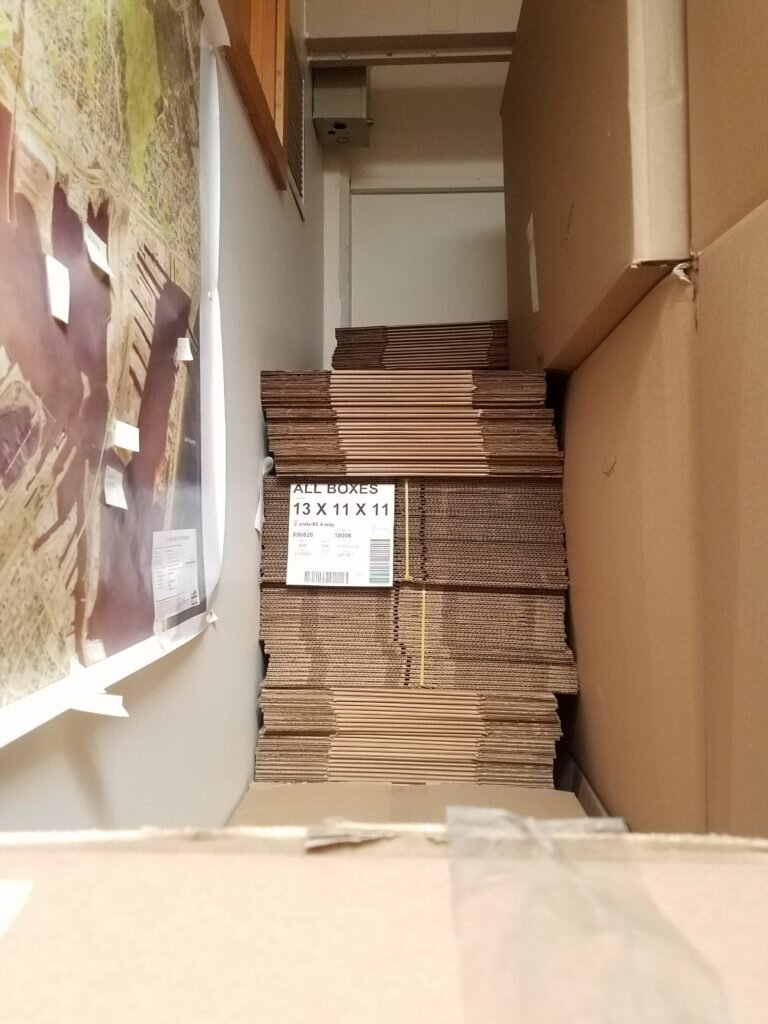

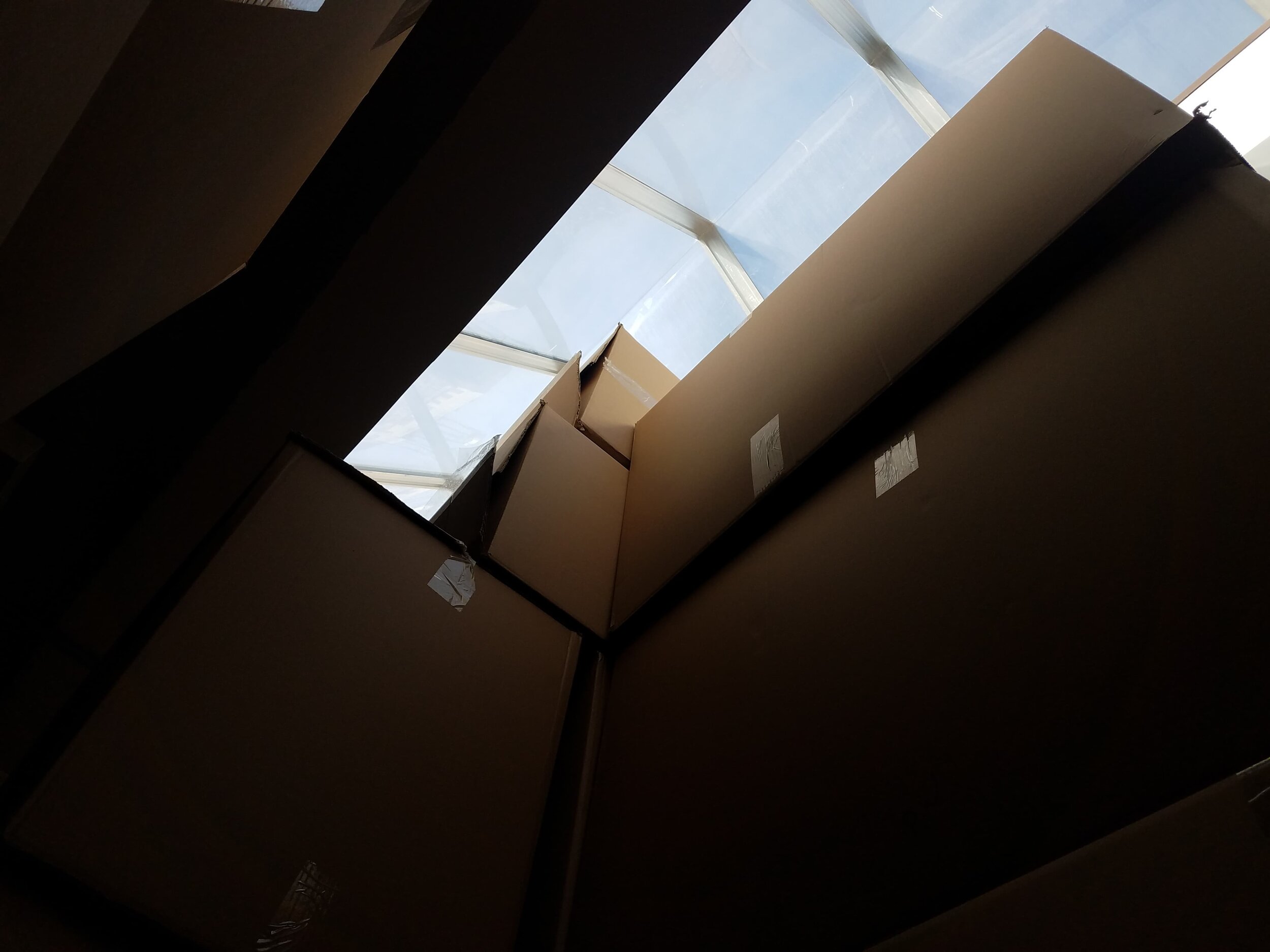 This is not my first Winter here. I know what to expect. It still struggle to imagine the extent of the activity that will occur in this small office suite over the next month-point-five.
This is not my first Winter here. I know what to expect. It still struggle to imagine the extent of the activity that will occur in this small office suite over the next month-point-five. In my assumed mode of fascination, I asked, “what do cutters do?”“They cut,” was the curt response. “Would you like to know what the cleaners do,” they followed up.I bit.“They cut too.”After a good laugh at my foolishness, I learned that before the cabbage is cut, salted and left to pickle, the heads are thoroughly cleaned so that there are no contaminants in the mix or on the cutting boards. Sauerkraut pickles for a month before it hits our shelves and sandwich line. Our kimchi ferments for a week before we package it.Also in the basement, I found the mop closet still under construction, and snapped a photo.
In my assumed mode of fascination, I asked, “what do cutters do?”“They cut,” was the curt response. “Would you like to know what the cleaners do,” they followed up.I bit.“They cut too.”After a good laugh at my foolishness, I learned that before the cabbage is cut, salted and left to pickle, the heads are thoroughly cleaned so that there are no contaminants in the mix or on the cutting boards. Sauerkraut pickles for a month before it hits our shelves and sandwich line. Our kimchi ferments for a week before we package it.Also in the basement, I found the mop closet still under construction, and snapped a photo.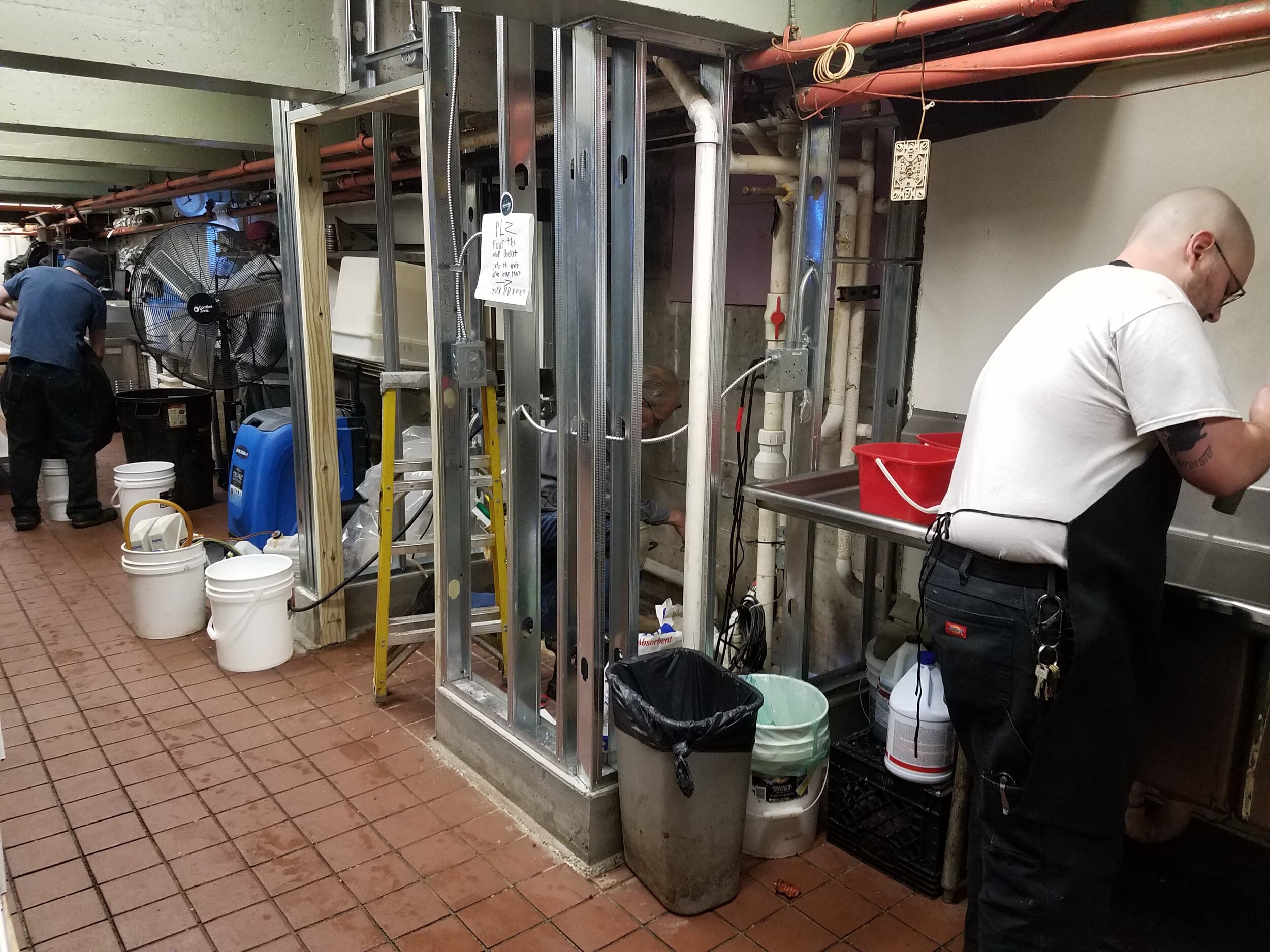 There are many lessons to be learned in the smokehouse proper, as the folks working down there have countless hours of hands-on experience creating the amazing food we sell.I also found a few purple tomatoes among the heirlooms. Purple is my favorite color, so this pleased me.
There are many lessons to be learned in the smokehouse proper, as the folks working down there have countless hours of hands-on experience creating the amazing food we sell.I also found a few purple tomatoes among the heirlooms. Purple is my favorite color, so this pleased me.
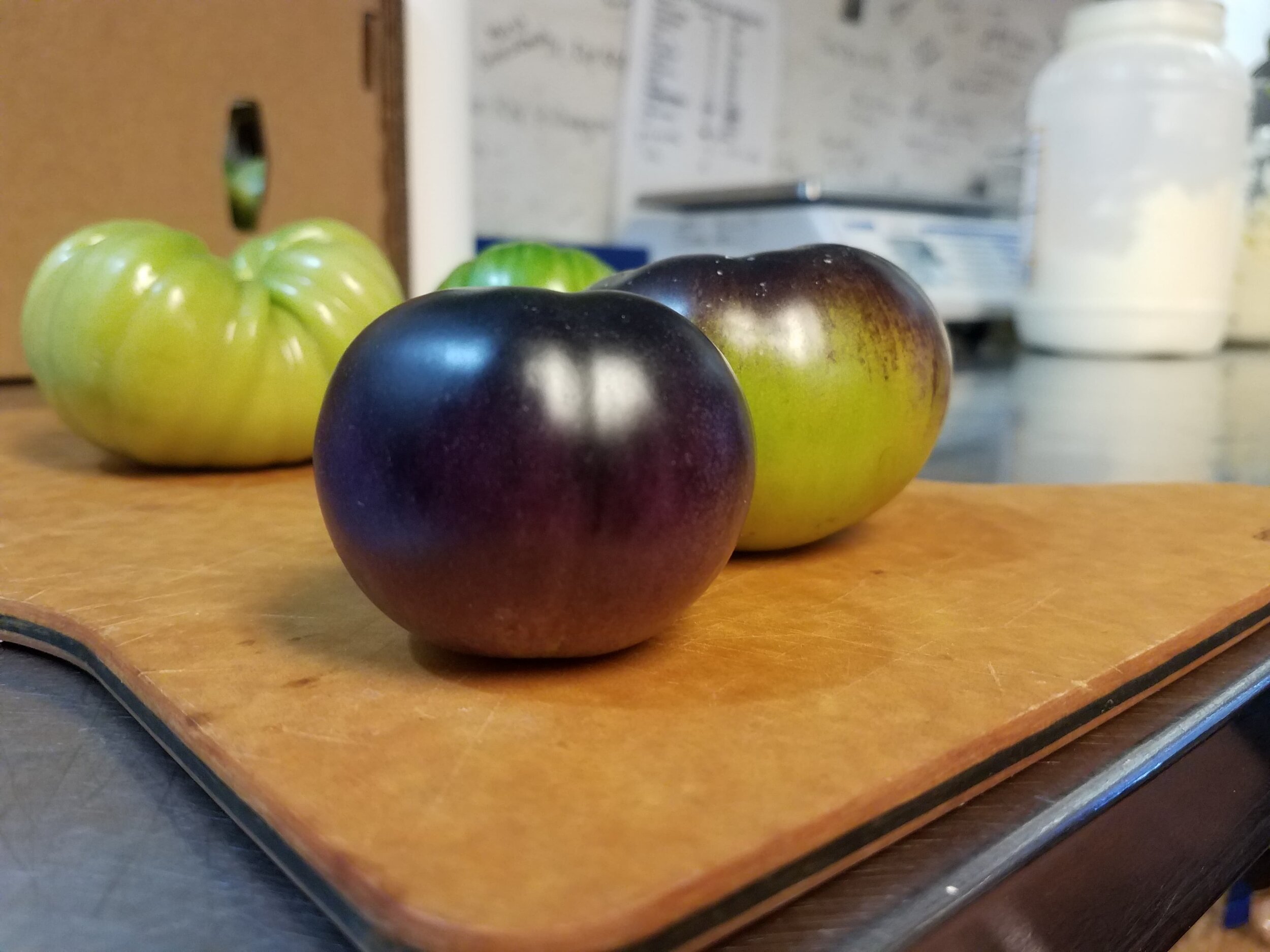
 One final note before you go: Monday, November 19th is the last day of our mail-order turkey special. Any purchase of a whole turkey breast made by Monday will come with a free 8oz tub of crayo.
One final note before you go: Monday, November 19th is the last day of our mail-order turkey special. Any purchase of a whole turkey breast made by Monday will come with a free 8oz tub of crayo.